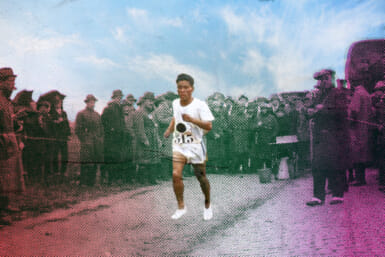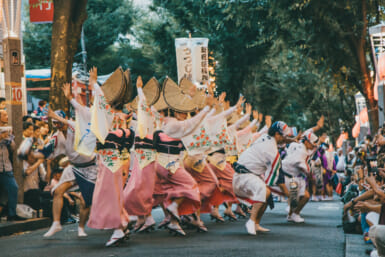by Yurie Horiguchi
BOYS’ FESTIVAL
In my last column I told some fishy tales, all of which I hope you took with a dash of shoyu.
But when I say that carp are flying in the gardens and on the verandas of Japan, it is the absolute truth. They are called koinobori, or carp streamers, and are a symbol of the May 5 Boys’ Festival Day, known as Tango-no-sekku.
To those innocents who think that May 5 is “Children’s Day,” forget it. The little girls are completely left out in the cold except to enjoy the national holiday as spectators. This day has been Boys’ Festival Day since the early Tokugawa Era, and has always been a national holiday.
Little girls used to have equal time Mar. 3, dating from the same era, until some out-and-out misogynist in the post-war government decided to abolish it as a national holiday, as I recounted in a previous column.
Why carp streamers and what do they signify?
It is because it was traditionally believed that carp were the only fish capable of swimming up rapid streams and even waterfalls. Therefore they were symbols of strength and bravery. I am delighted to be able to say that this just isn’t true. Someone must strike a retaliatory blow for poor little discriminated-against females!
Scientists disclaim that carp can swim up waterfalls. Oh yes, they are hardy fish and live for many a long year, but salmon are far better, more rapid and more daring swimmers. Ha!
The carp streamers that herald the coming of the Boys’ Festival are flown only in households where there are sons, and the fish are graded in size, the largest at the top of the pole, and the smallest at the bottom.
With families decreasing in size one would expect to see a sad and solitary black carp drooping limply from countless pole tops, but one seldom does. You see, some families cheat. Carp streamers are often given as gifts, so up the pole they go whether the family has an equivalent number of sons or not.
The second most common symbol of the Boys’ Festival is the iris, and the third is the kite. Then, of course, there is the indoor display of ancient warrior costumes, helmets, banners, arms, etc.
Why the iris, or shobu? Because in ancient times this flower was believed to be a charm against misfortune. Would you believe an iris bath (leaves only) to dispel evil spirits? Even today, some families insist on their sons taking an iris bath on the day of the festival.
Iris leaves—or blades, if you prefer—were used in lieu of swords by little boys playing at warriors in the old days, and the flower was stuck in the head-band. Among the nobility it was the custom to give gifts of toy helmets adorned with iris blades.
In rural districts, some farmers still plant iris on their thatched roofs to keep their families free from evil influences.
During most of the Edo Period (17th to 19th Century) the May 5 Festival was celebrated out of doors. It was the custom for every samurai to set up a little palisade of sorts outside the gate of his house and display within it such things as a banner (nobori), streamer, helmet, spear, halberd, etc., while boys played warrior-like games, flew kites, beat drums and made general nuisances of themselves.
And then, toward the end of the Edo period (or a little over 100 years ago), the boys got jealous of the girls. They too wanted a doll display, the sissies!
But as there was no true tradition for the order of the display (as there is for girls’ dolls), even today there are no set rules for placing objects on the three-tiered stands (girls have seven or five tiers).
The stands are covered in green cloth with a border of iris-decorated brocade. An ancient suit of armor is generally placed (seated) on the top stand, or perhaps a helmet. There are also a drum, a sword, a folding fan such as that once used by warlords, miniature banners similar to those once carried onto fields of battle, a horse, spears, bows and arrows, etc.
There are also glass-enclosed boxes of individual dolls, each representing some mythical or historical figure. The two most popular are Shoki, or the devil chastiser, who was a legendary Chinese figure believed to have been capable of subjugating devils (the Chinese St. George?), and Kintoki, or Kintaro (a delightful little boy doll) who, when he grew to manhood became one of Japan’s most adventurous and daring young warriors back in the 11th Century or so.
A salesman in a department store told me that sets are selling well this year, especially in the ¥100,000 to ¥300,000 range! It seems that parents with a first son receive presents of money from grandparents and relatives, and adding their own savings they splurge on what less traditionally minded people would call a totally unnecessary acquisition in these days of inflation and unbalanced household budgets.
Perhaps only in Japan can it happen.








